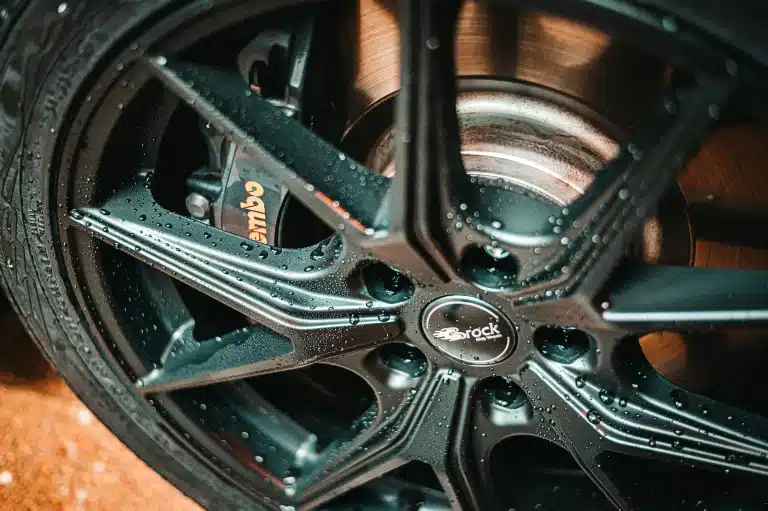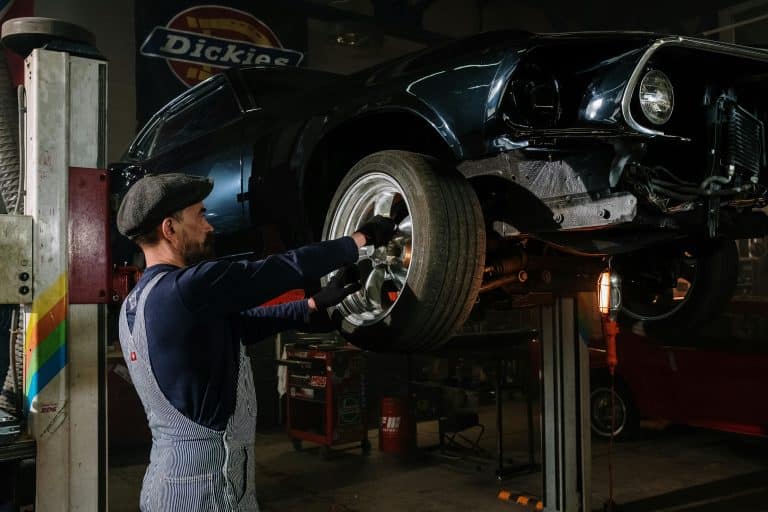If your car’s wheels are looking dull or damaged, you might be wondering how to fix them. Diamond-cut alloy wheels are popular because they look brilliant and shiny, but they need special care when damaged. This guide explains everything about diamond cut alloy wheel repair and why professional services matter.
What Are Diamond Cut Alloy Wheels?
Diamond-cut alloy wheels have a special finish that makes them stand out. Unlike regular powder-coated wheels, these have a shiny, metallic look that catches the light beautifully.
The process works by mounting the wheel on a machine called a lathe. This machine spins the wheel whilst a cutting tool carefully removes a thin layer of the metal surface. The cutting tool creates a smooth, reflective finish that looks almost like polished silver. Popular finishes include silver, black, and various metallic colours.
After the cutting is done, the wheel gets covered with a clear protective coating. This protects the bare metal from water, salt, and dirt that could cause rust. Without this layer, the diamond cut finish would quickly become damaged.
Why Do Diamond-Cut Wheels Get Damaged?
Understanding why cut alloy wheels get damaged helps you look after them better. The most common problem is corrosion, which happens when the protective clear coat breaks down over time.
British roads are harsh on wheels. Salt used in winter, potholes, and general wear all attack the protective coating. Once this coating gets scratched, moisture gets underneath. This causes the metal to corrode, creating white or grey patches that look terrible.
Kerb damage is another frequent issue. When you scrape your wheel against a kerb, you break through the protective coating. Even a small scratch can lead to bigger problems if left untreated, turning into a damaged alloy wheel.
The Professional Diamond Cut Repair Process
Repairing diamond-cut wheels isn’t something you can do at home. It requires specialist equipment and expertise. Here’s what happens during a professional alloy wheel refurbishment at Alloy Fix.
Initial Inspection
Technicians examine the wheel carefully to check the damage. They look for corrosion, scratches, dents, and structural problems. This determines whether the wheel can be safely repaired.
Removing the Tyre and Stripping
The tyre must come off before any repair work begins. Then all the old, damaged coating and corroded metal gets removed using chemical strippers. This gives a clean surface to work with.
The Diamond Cutting Process
This is where the transformation happens. The wheel goes onto a computer-controlled lathe that spins it at high speed. A diamond-tipped cutting tool removes a thin layer from the wheel’s face, creating that fresh, shiny finish. The computer ensures the cut is perfectly even across the entire surface.
Applying the Protective Clear Coat
Once cutting is complete, the wheel needs its protective coating. Professional workshops use high-quality lacquer specially designed for alloy wheels. This gets applied in several thin layers and baked in an oven to cure properly. This baking process makes the coating incredibly hard and durable.
Quality Checking
Finally, technicians inspect the finished wheel to ensure it meets quality standards. Once approved, the tyre gets refitted, balanced, and the wheel is ready for your car.
Why Professional Repair Service Is Essential
You might see DIY repair kits online, but to repair diamond-cut alloy wheels really isn’t a job for amateurs. Here’s why professional alloy wheel repairs matter.
Specialist Equipment Required
The lathe machines used for diamond cutting cost thousands of pounds. Without this equipment, you cannot achieve the correct diamond cut alloy finish.
Technical Expertise
Knowing how much material to remove and applying the coating correctly requires proper training. Car enthusiasts appreciate that wheels are safety-critical components. According to the Royal Society for the Prevention of Accidents, proper vehicle maintenance is essential for road safety. A badly repaired wheel could fail whilst driving.
Quality Materials
Professional workshops use industrial-grade clear coats far superior to consumer products. At Alloy Fix, we use the highest quality materials, which is why we offer a three-year warranty on all our diamond-cut alloy wheel repair work.
Long-lasting Results
A properly repaired wheel should last for years. Poor-quality repairs often fail within months. Professional refurbishment service from specialists like Alloy Fix saves you money in the long run.
Get your free quote today
The Benefits of Professional Diamond Cut Repair
When you choose professional services, your wheels will look as good as new. The fresh finish restores that showroom shine, making your whole car look better.
Professional repair protects your investment. Quality alloy wheels are expensive to replace. Repairing them costs a fraction of the price whilst giving you the same visual result.
You’ll also maintain your car’s value. If you plan to sell your car, having wheels in excellent condition makes a real difference to potential buyers.
Most importantly, professional repair ensures safety. You can drive with confidence knowing your wheels have been repaired properly.
Frequently Asked Questions
Can all diamond-cut wheels be repaired?
Most can be repaired multiple times, but there are limits. Each time a wheel is diamond cut, a thin layer of metal is removed. Eventually, the wheel becomes too thin to cut again safely. A professional technician will measure the wheel and tell you honestly whether repair is possible.
How much does diamond cut alloy wheel repair cost?
The cost varies depending on wheel size and damage extent, but it’s significantly cheaper than buying new wheels. A single wheel repair typically costs between £60-£100, whilst replacement alloys could cost £500-£1,500 or more.
How long does the repair process take?
Professional diamond cut repair usually takes 2-3 days per wheel. This includes stripping the old finish, cutting, applying multiple coats of lacquer, and allowing proper curing time. Some companies offer loan wheels so you can continue driving while your wheels are being repaired.
Final Thoughts
Diamond cut alloy wheels look fantastic when they’re in good condition, but they need professional care when damaged. Understanding the repair process helps you appreciate why specialist services are essential.
If your diamond-cut wheels are looking tired or damaged, don’t put off getting them repaired. Corrosion only gets worse over time, and early repair is always cheaper. Choose a reputable specialist who offers warranties on their work, and you’ll have wheels that look brilliant and last for years.




